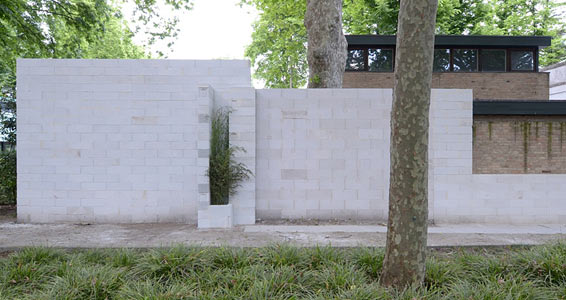 |
||||
|
||||
|
||||
ARTEXT : La Biennale di Venezia
INTERCOURSES
Jesper Just confronts the paradoxical nature intrinsic to Biennale commissions in the Giardini: the pavilion as physical representation of one country in another country. Using this as a point of departure, Intercourses examines themes of architectural pastiche and cultural dislocation by creating an immersive, multi-faceted environment. Made up of five channels, the film is set in a replica of Paris, France, in a suburb of Hangzhou, China. Unlike many replica cities, this one is fully functional, though in contrasting states of construction and decay. Just's treatment of the location challenges the viewer's preconceived notions of space and time, rendering obsolete the distinction between real or imagined memories, between factual or fictional connections to a place. The film follows three men, interwoven within the scenes, but it is the city that is the main character. Just explains, I've worked in the past with the idea of architecture performing, with a building or structure as a main performer, a main protagonist. And here there was the possibility of working with a whole city. I was thinking about ways to make the city the protagonist or mediator between these characters, making them connect via the architecture. I wanted to explore how you could take something as superficial as this architecture and then turn it into something connecting humans. The projections vary in size from one meter to 15 meters depending on the scale of the room they inhabit, underscoring the spatial element of Just's presentation. The exhibition begins before the visitor has entered the pavilion, with architectural interventions defined by Just that create a new geography, engaging the viewer on a visual but also a physical level. The architecture orchestrates the audience's relation to the work, choreographing the viewer's experience of the pavilion.
Curatori : Lotte S. Lederballe Pedersen.
Web site : http://www.danishpavilion.org/ |
||||
Artext © 2013 |
